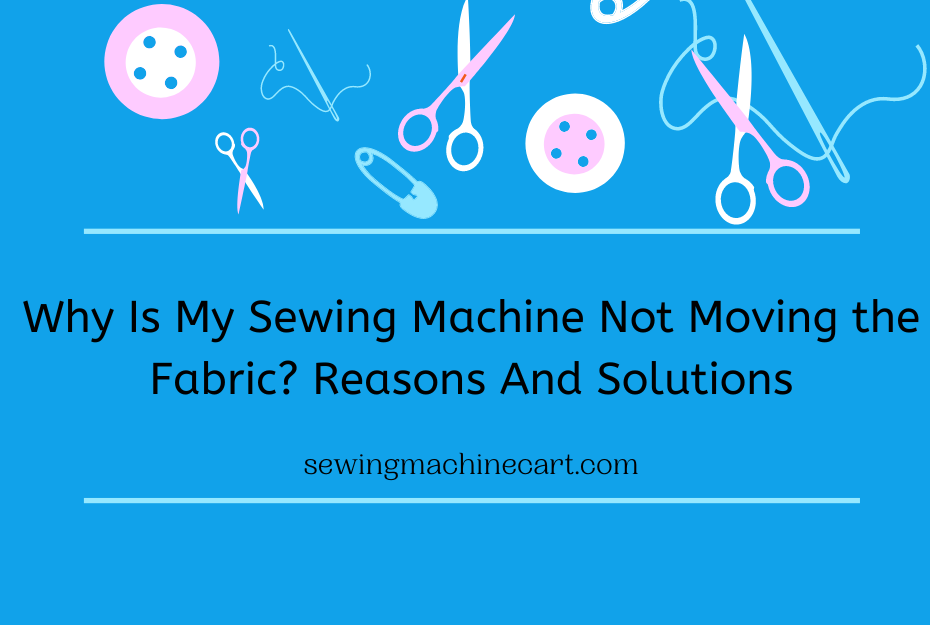You’ve probably asked this question more than once if you’re like me. And if you’re not like me, well, lucky you! But for the rest of us, this is a frustrating mystery that can often be solved with a simple fix.
Why Is My Sewing Machine Not Moving the Fabric?
Let’s begin!
People also search Sewing Machine Not Moving Fabric?, Are Necchi Sewing Machines Good?, How To Adjust Stich Length On Sewing Machine?, How To Adjust Foot Height On Sewing Machine?
Check the needle
One of the most common reasons a sewing machine needle won’t move is that the needle is not properly inserted. Check the needle to make sure it is fully inserted and properly secured. If the problem persists, try replacing the needle with a new one.
Another possibility is that the sewing machine’s timing is off. This can be caused by several factors, such as using an incorrect type of needle, incorrect thread tension, or a build-up of lint in the machine. If you suspect the timing is off, take your machine to a sewing machine repair shop for service.
Check the presser foot.

One of the most common reasons a sewing machine gets jammed is because the pressure foot is not down. The presser foot is the metal plate with a knob on the back that holds the fabric down while you sew. If this is not down, the machine will be unable to move the fabric and eventually jam [ Wikipedia guide ].
To fix this, lower the presser foot and try sewing again. If the problem persists, there may be an issue with your needle.
Check the feed dogs
The feed dogs are the metal teeth under the plate of your sewing machine that grip and move the fabric while you sew. If your feed dogs are not moving, your sewing machine is likely not properly threaded. Try rethreading your machine following the instructions in your manual. If your feed dogs still are not moving, you may need to take your sewing machine to a professional for servicing.
Check the bobbin case.
If your sewing machine isn’t moving the fabric at all, there are several things you can check. First, make sure that the bobbin case is in correctly. If it’s not, the machine won’t be able to pick up the thread from the bobbin and sew with it.
Next, check to see if the thread is wound correctly. If it’s not, the machine won’t be able to sew with it. Finally, make sure that the needle is in correctly. If it’s not, the machine won’t be able to sew with it.
Check the tension
One of the most common reasons a sewing machine is not moving the fabric is because the tension is too tight. The tension can be adjusted by turning the knob on the side of the machine. If the tension is too loose, the stitch will be too loose. If the tension is too tight, the stitch will be too tight.
Another reason the sewing machine may not move the fabric is that the feed dogs are not lowered. The feed dogs are located under the needle plate and help move the fabric through the machine. They should be in the lowered position when you start sewing.
If neither of these solutions solves the problem, there may be an issue with the timing of your sewing machine. This more severe problem will require a qualified technician to fix it.
Clean the machine
Most modern sewing machines have a self-cleaning function, but it’s always a good idea to give your machine a good cleaning every once in a while. A sewing machine that is not properly lubricated can cause all sorts of problems, including fabric that refuses to move.
First, check your machine’s manual to see if there are any special instructions on how to clean it. If not, start by unplugging the machine and removing any lint or thread that may be clogging the works. Use a can of compressed air to blow away any lint you can’t reach with a brush.
Next, oil all of the moving parts. Again, consult your manual to see where the oil points are located. Sewing machines require special oil that can be purchased at most craft stores. Do not use regular household oils such as WD-40 or olive oil.
Once you have finished oiling the machine, plug it in and turn it on. Try sewing a few stitches on a scrap piece of fabric to ensure the machine runs smoothly.
Check for obstructions
First, check to ensure there is nothing blocking the needle’s path. If the needle is hitting an obstruction, it cannot move properly.
Next, check to see if the feed dog is lowered. The feed dog is a small metal piece that moves the fabric as you sew. If lower, it will not be able to grip the fabric and move it.
If neither of these solutions solves the problem, consult your sewing machine’s manual for troubleshooting tips specific to your model.
Take it to a professional
If your sewing machine is not moving the fabric, there are several things you can check on your own. First, make sure that the presser foot is down. If it is, check to see that the feed dogs are up by looking under the throat plate. If they are not, consult your machine’s manual for instructions on how to raise them.
If the feed dogs are up and the presser foot is down, but the sewing machine still is not moving the fabric, there may be an issue with the machine’s timing. This is a complicated issue to fix on your own, and it is best to take your sewing machine to a professional for servicing.


